Walking the Moon with my own Photos - After Half Moon
On these pages I do "moon walks" on the basis of my own photos. In other words, I try to name the objects on my lunar photos to get to know the moon better. Maybe these pages will help others to get to know the moon better as well...
On this page, the moon can be seen from shortly before Half Moon until shortly after Half Moon. See also page From Half Moon to Full Moon (RX10 M3).
Back to the overview of my "moon walks".
Introduction
The following photos show the moon after Half Moon. The photos are rotated by 180 degrees or mirrored so that they correspond to the normal visual impression.
Photos
Set 1
This newer photo of the moon was taken on February 24, 2018 - one day after Half Moon (Half Moon was on February 23, 2018, shortly after 9 a.m.). The photo was taken with the Sky-Watcher Skymax-102 OTA and again with the camera held to the eyepiece.
Bancroft (13 km diameter), Feuillee (10 km diameter), and Beer (10 km diameter) serve as examples of small craters that can be recognized.
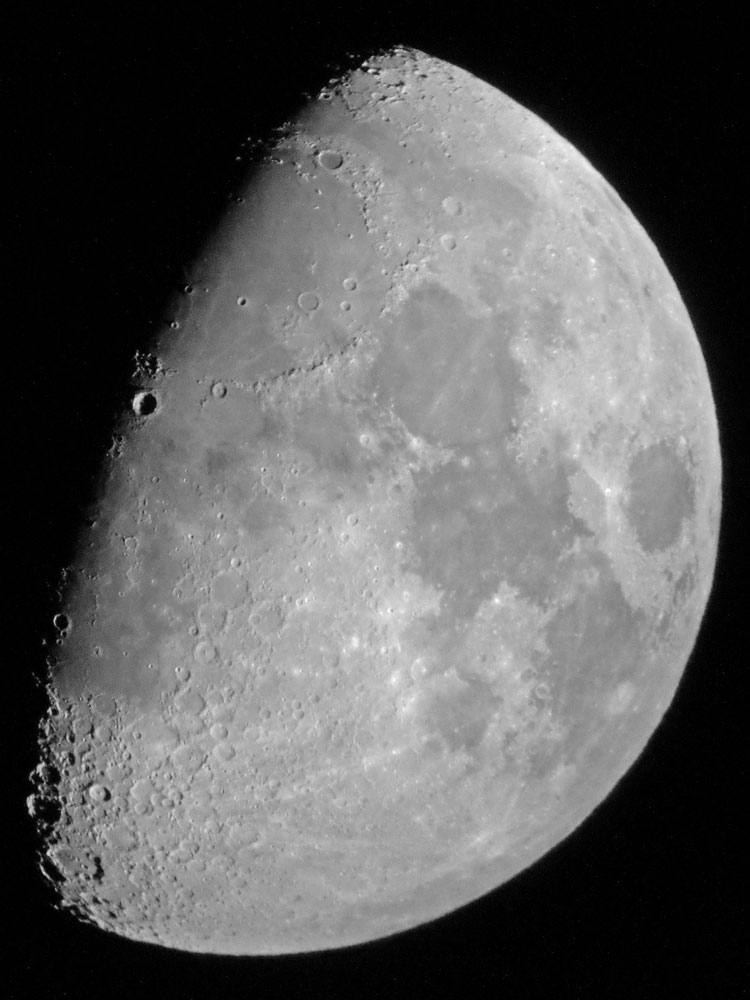 |
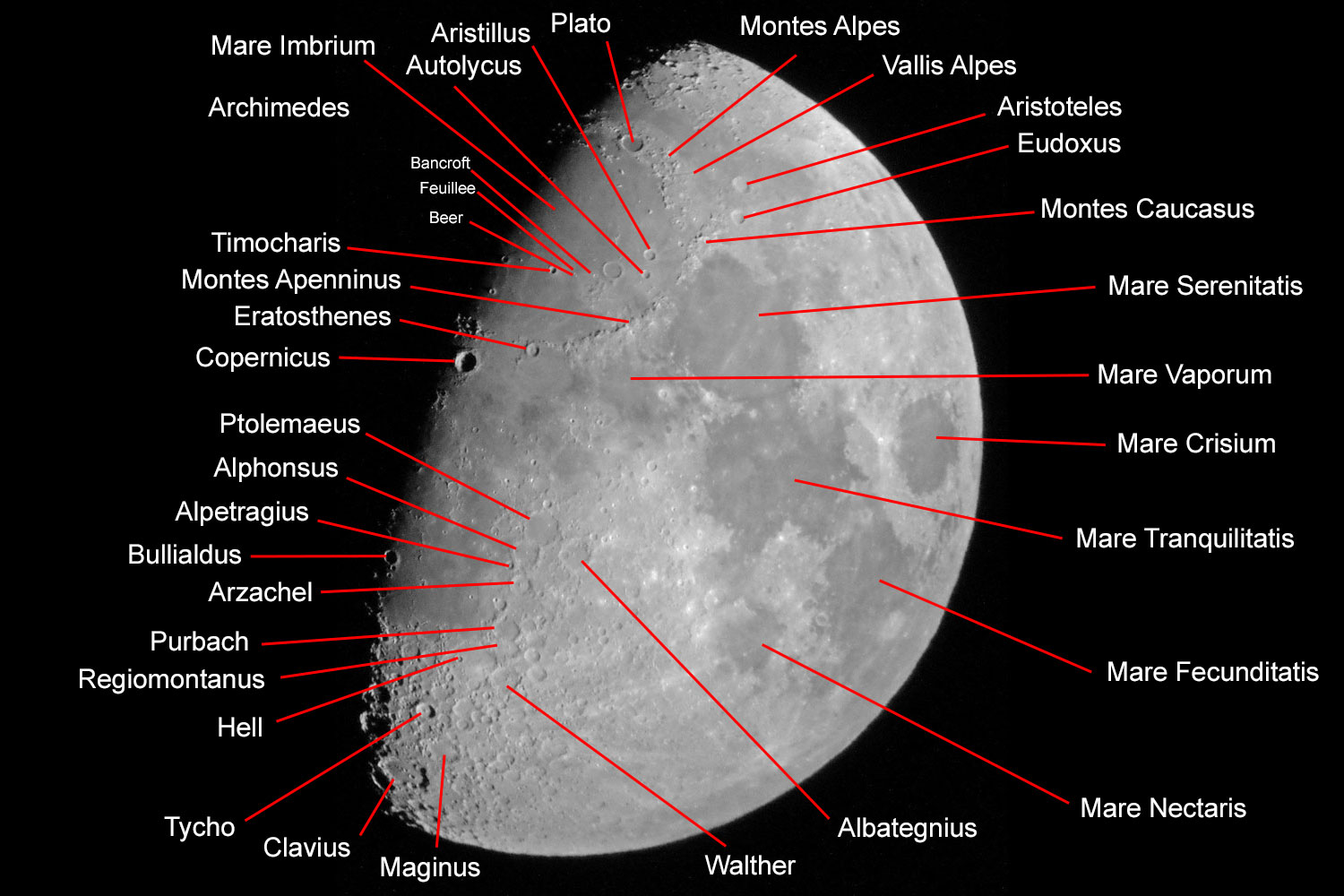 |
Photo data: February 24, 2018, Sky-Watcher Skymax-102 telescope, Ricoh GR held to the eyepiece
Set 2
Now a photo of the moon, which was taken with the Sky-Watcher Explorer 150PDS and the camera held to the eyepiece (May 5, 2017; two days afters Half Moon, which was on May 3, 2017 at about 7:40 p.m.).
Bancroft (13 km diameter), Feuillee (10 km diameter), and Beer (10 km diameter) serve as examples of small craters that can be recognized.
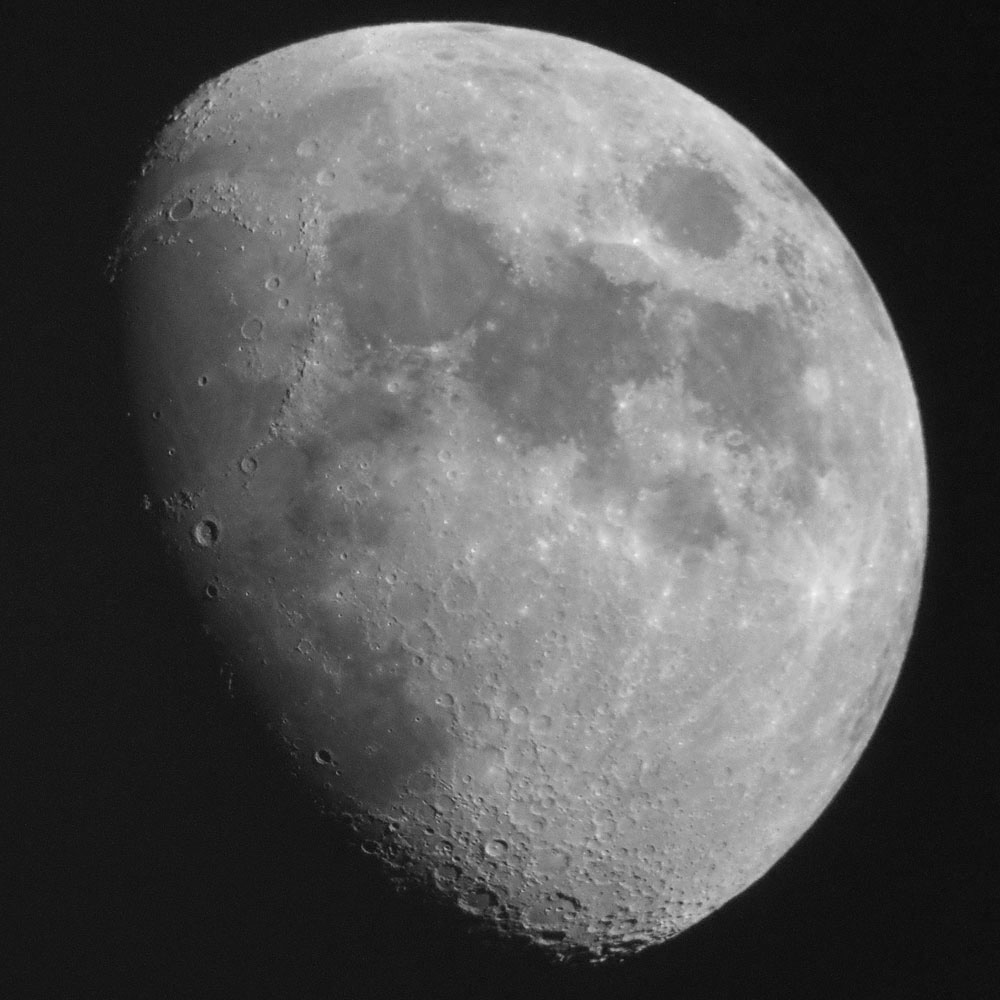 |
 |
Photo data: May 5, 2017, Sky-Watcher Explorer 150PDS telescope, Ricoh GR held to 16 mm UWA eyepiece
Set 3
Two more photos taken with the 5" Sky-Watcher Heritage P130 telescope and the camera held to the eyepiece (April 23, 2010; Half Moon was on April 21, 2010 at about 7:20 p.m.).
Bullialdus A (26 km diameter) and B (21 km diameter) serve as examples of small craters that can be recognized. They are probably not representative for the original photo, which was downsampled considerably for this purpose.
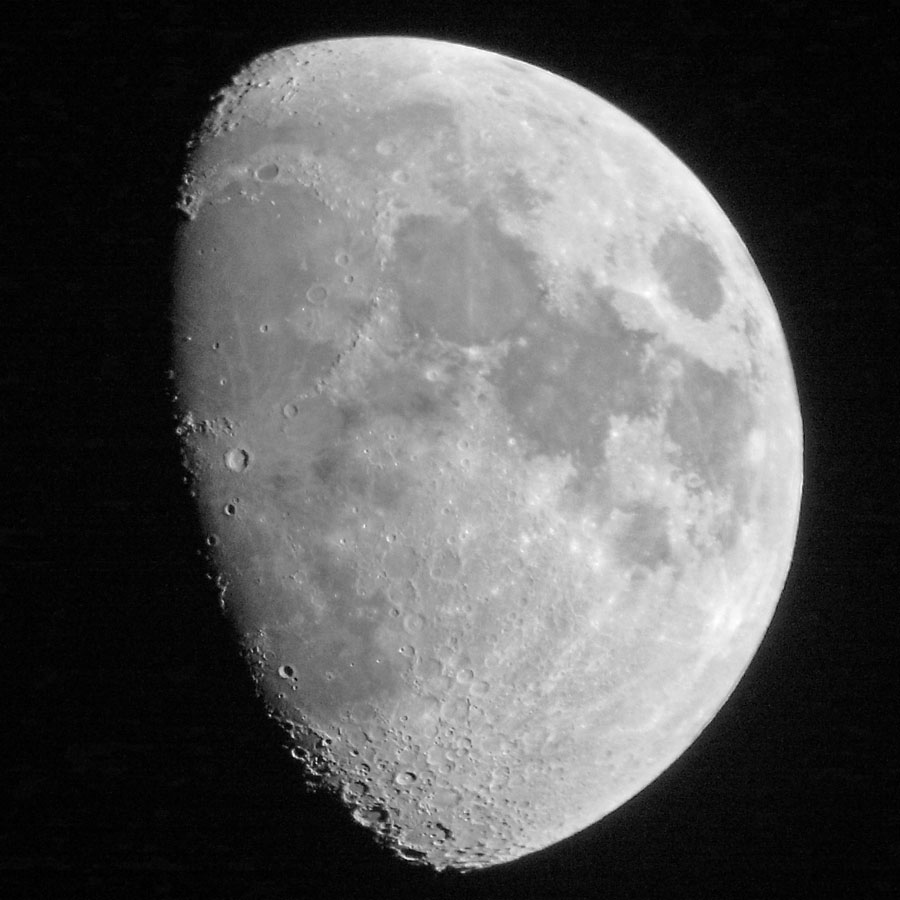 |
 |
|
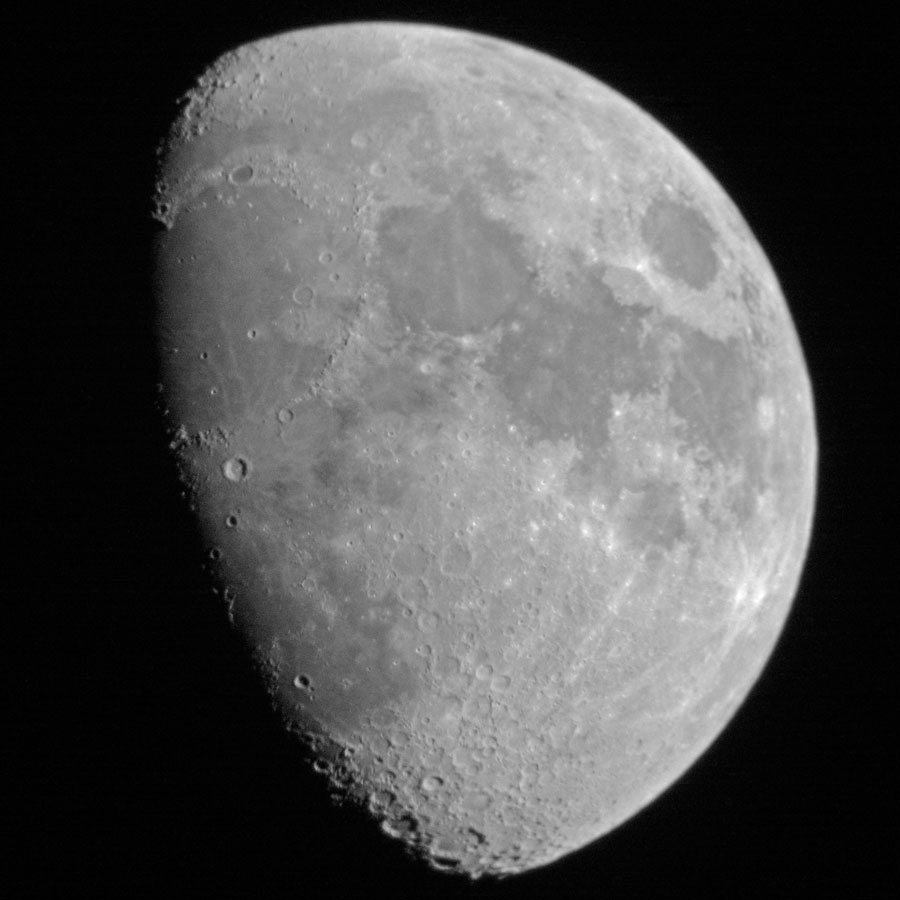 |
 |
Photo data: April 23, 2010, Sky-Watcher Heritage P130 telescope, Ricoh GXR with A12 module held to eyepiece
Set 4
Now, two photos that were taken with the 6" Newtonian telescope Sky-Watcher Explorer 150PDS with the camera held to the eyepiece (April 6, 2017; Half Moon was on April 3, 2017 at about 7:40 p.m.).
Darney (15 km diameter) and Darney C (13.3 km diameter) serve as examples of small craters that can be recognized.
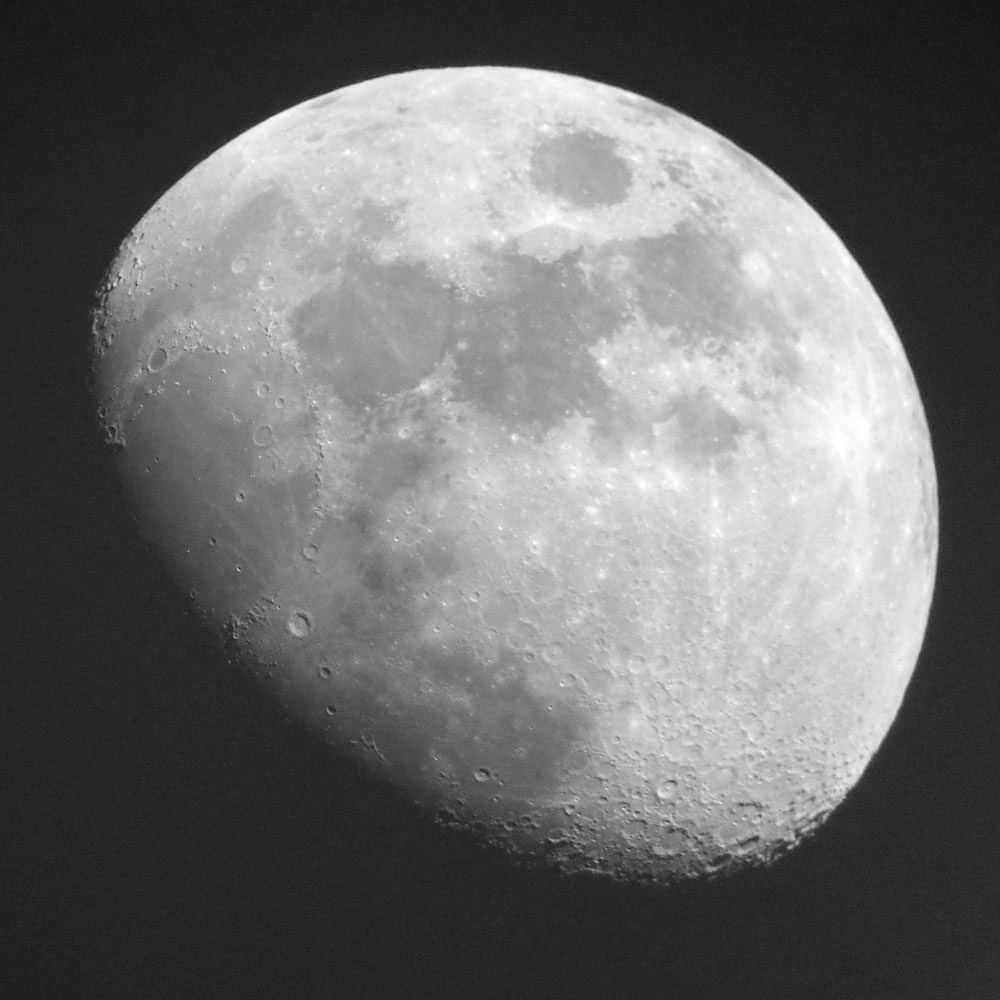 |
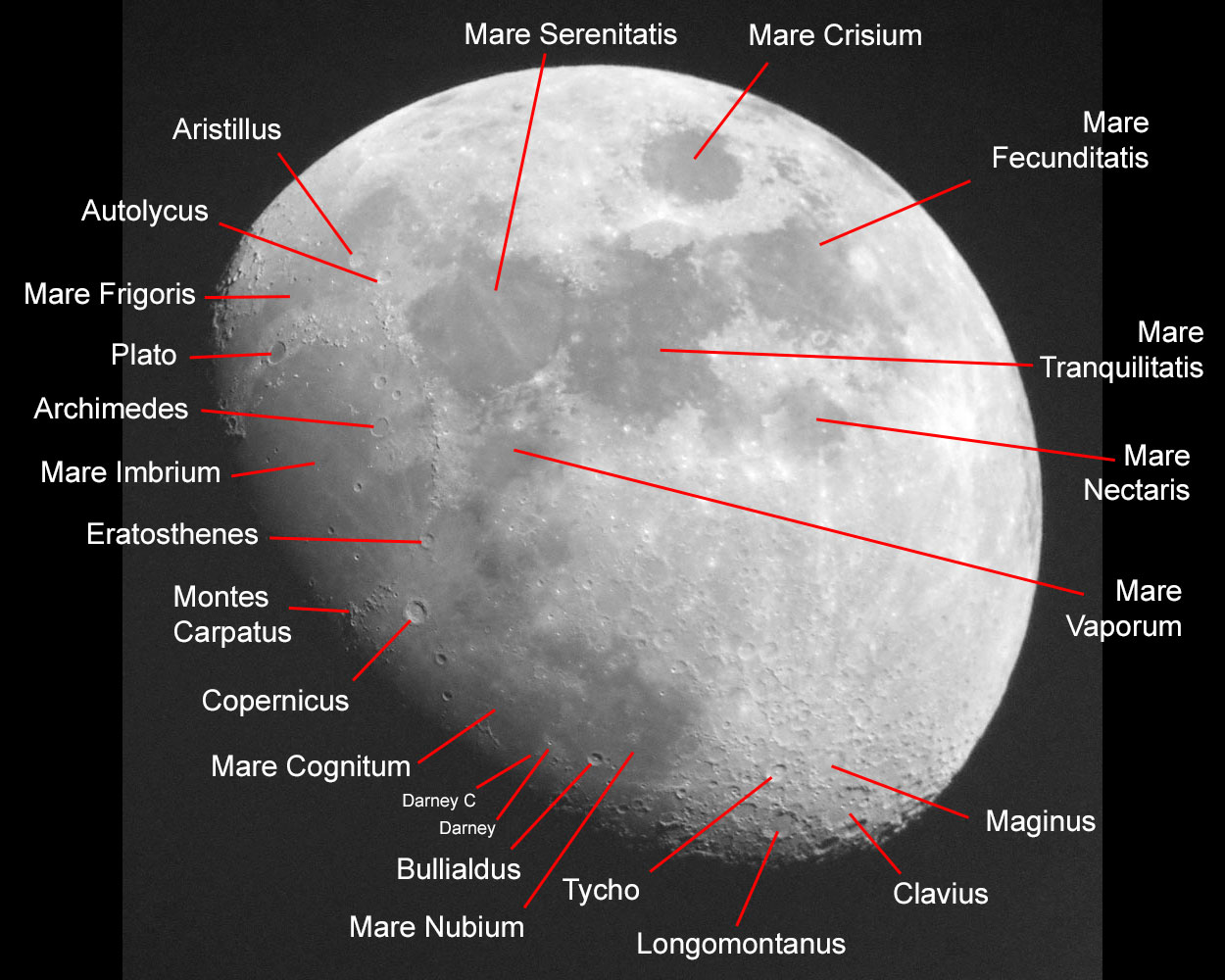 |
|
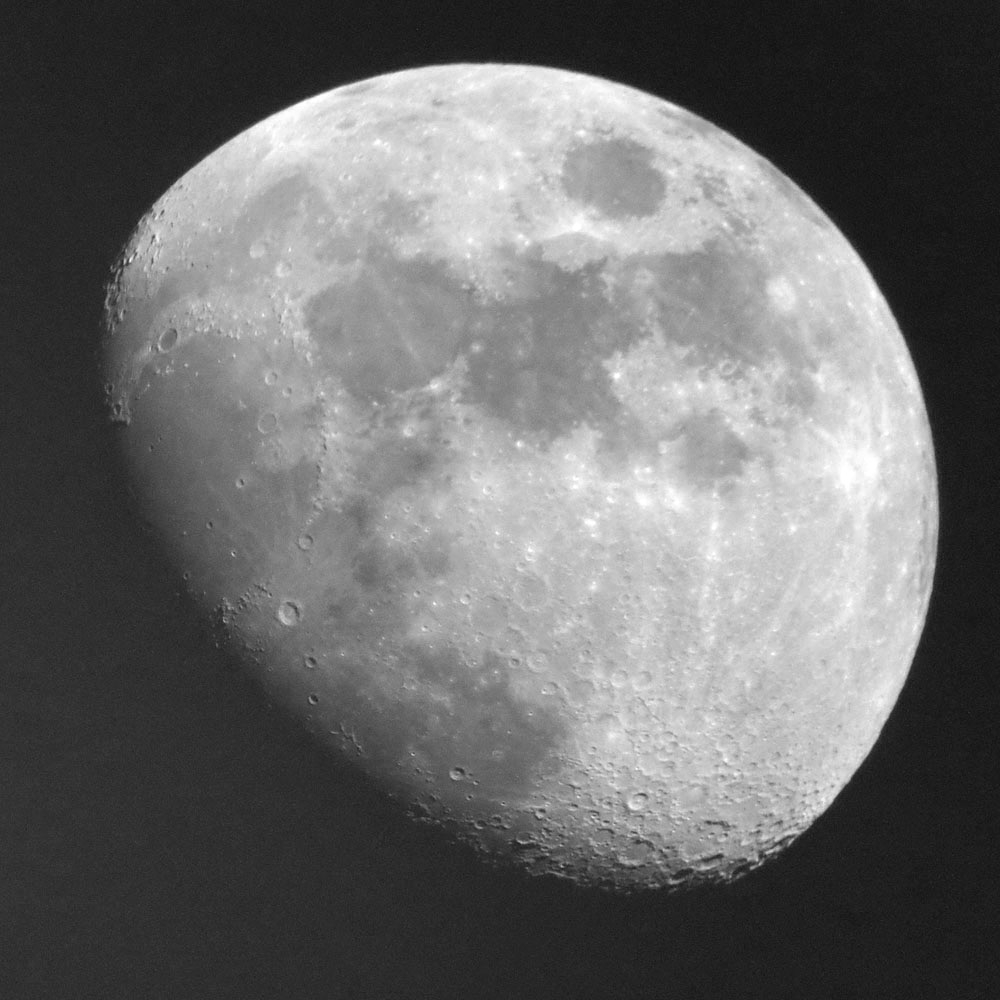 |
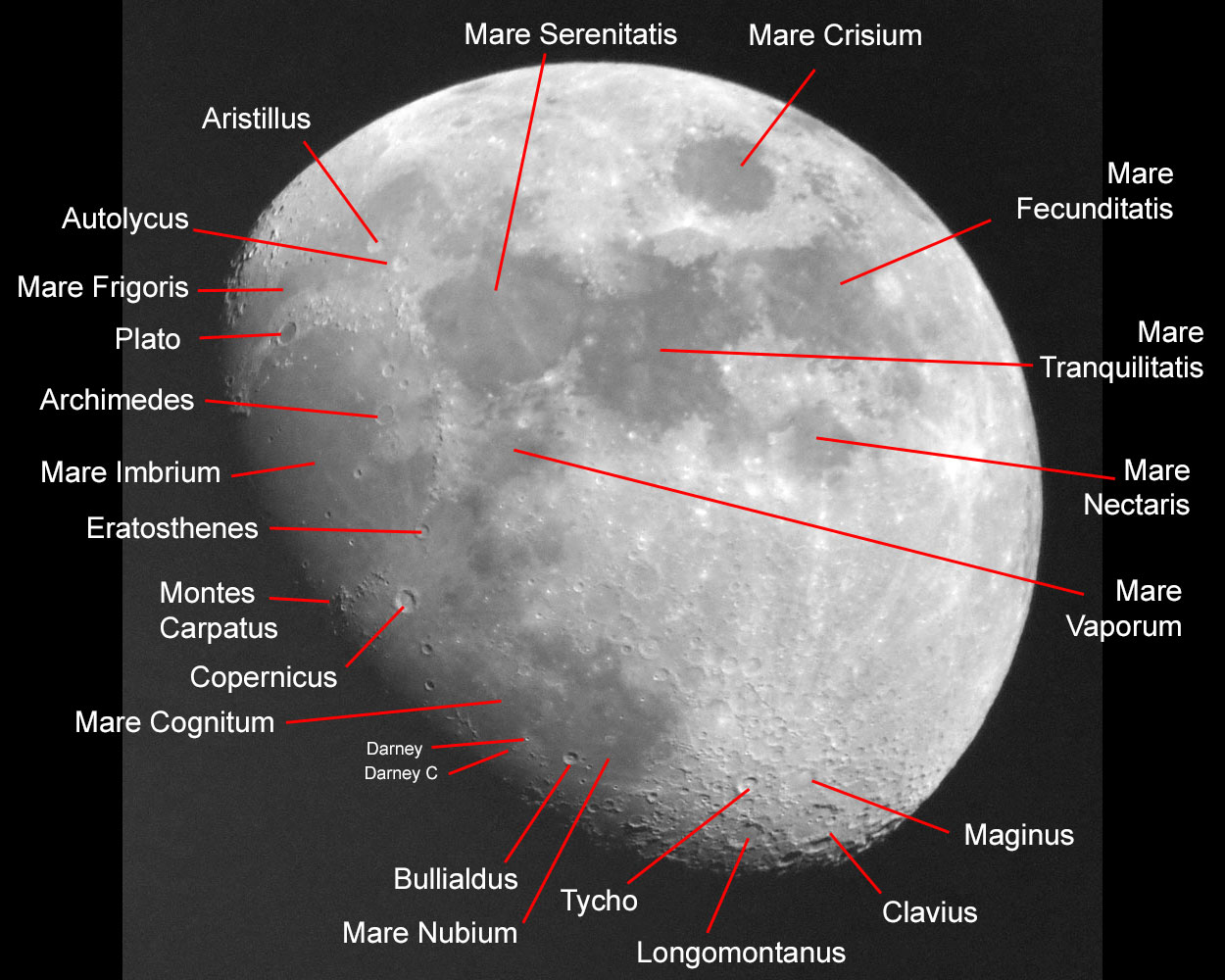 |
Photo data: April 6, 2017, Sky-Watcher Explorer 150PDS telescope, Ricoh GR held to 16 mm UWA eyepiece
Set 5
This newer photo of the moon was taken on February 25, 2018 - two days after Half Moon (Half Moon was on February 23, 2018, shortly after 9 a.m.) and shows the "golden handle" (Montes Jura) at the upper left. The photo was taken with the Sky-Watcher Skymax-102 OTA and again with the camera held to the eyepiece.
Bancroft (13 km diameter), Feuillee (10 km diameter), and Beer (10 km diameter) serve as examples of small craters that can be recognized.
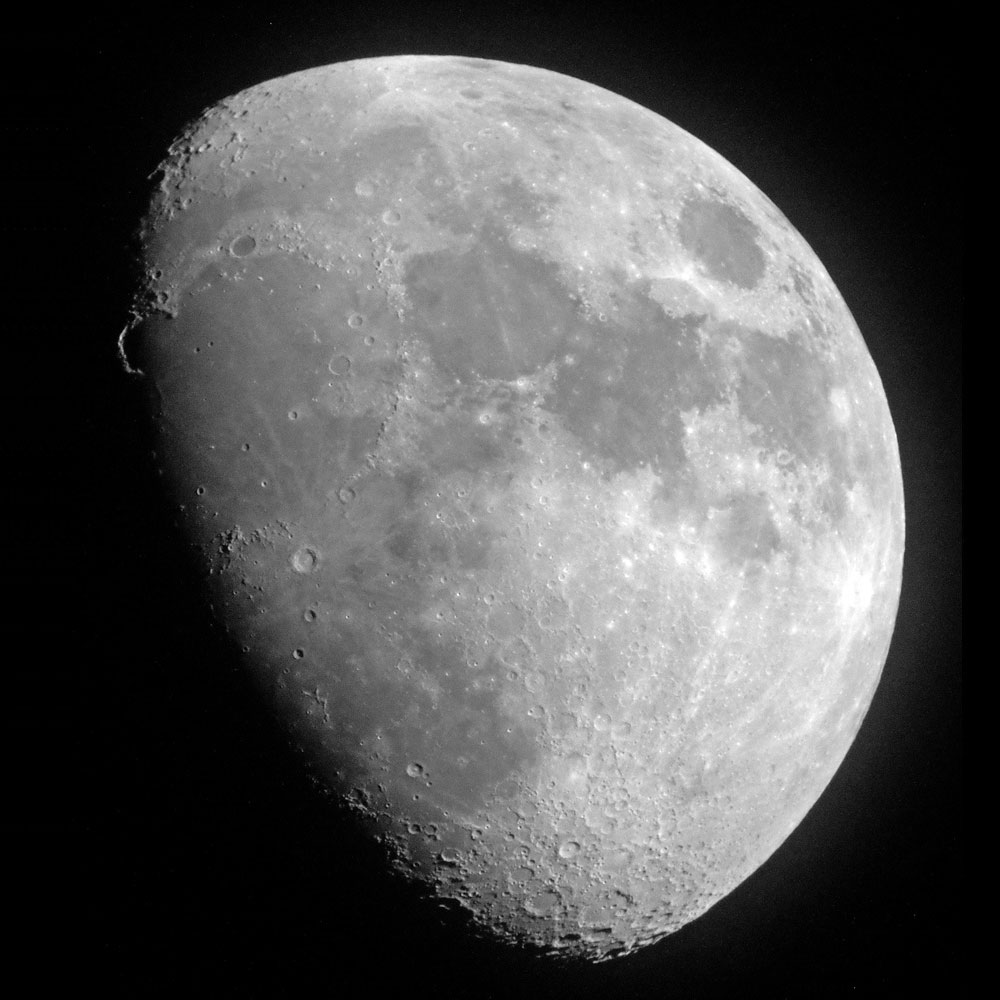 |
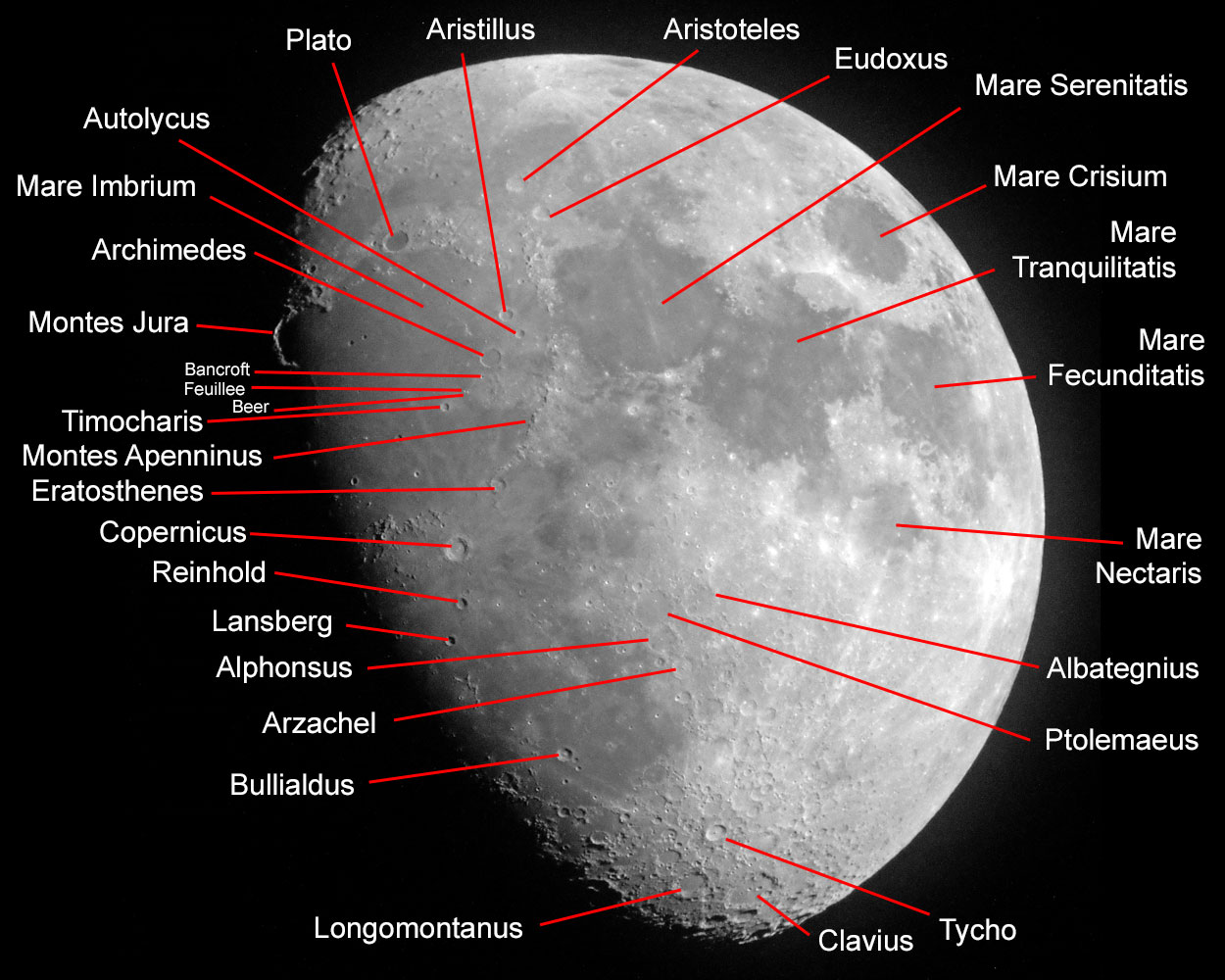 |
Photo data: February 25, 2018, Sky-Watcher Skymax-102 telescope, Ricoh GR held to the eyepiece
Set 6
This newer photo of the moon was taken on February 26, 2018 - three days after Half Moon (Half Moon was on February 23, 2018, shortly after 9 a.m.). The photo was taken with the Sky-Watcher Skymax-102 OTA and again with the camera held to the eyepiece.
Hortensius (15 km diameter) serves as an example of small craters that can be recognized.
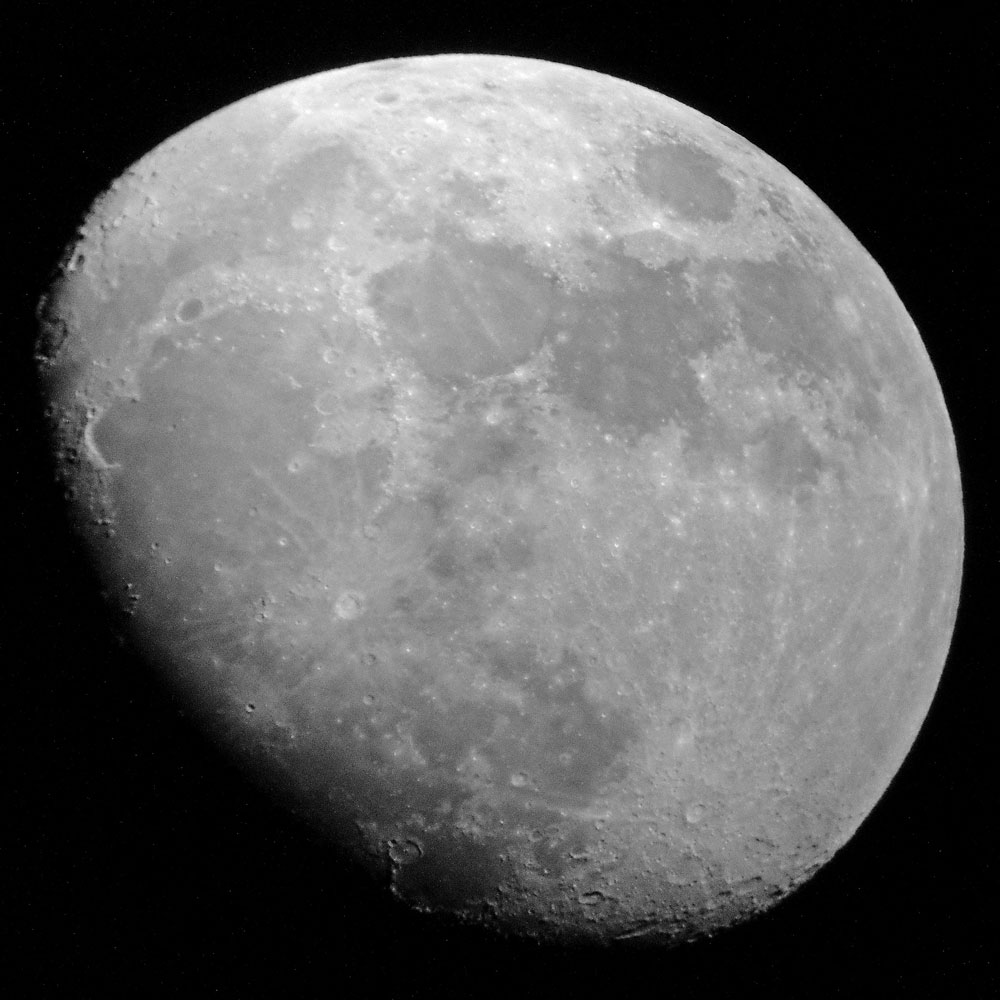 |
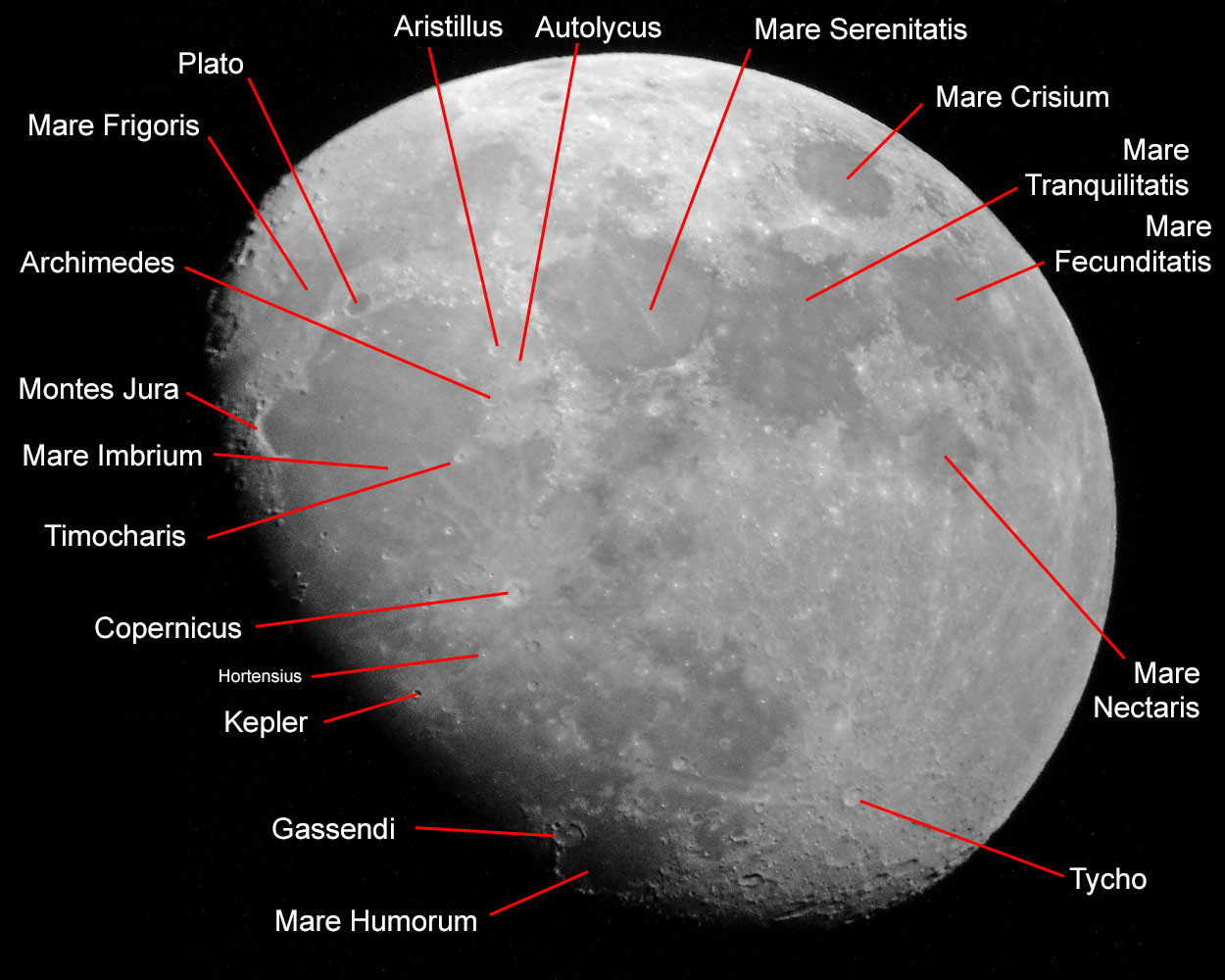 |
Photo data: February 26, 2018, Sky-Watcher Skymax-102 telescope, Ricoh GR held to the eyepiece
Set 7
This newer photo of the moon was taken on February 27, 2018 - four days after Half Moon (Half Moon was on February 23, 2018, shortly after 9 a.m.). The photo was taken with the Sky-Watcher Skymax-102 OTA and again with the camera held to the eyepiece.
Mersenius S (16 km diameter), Mersenius C (14 km diameter), and Hortensius (15 km diameter) serve as examples of small craters that can be recognized.
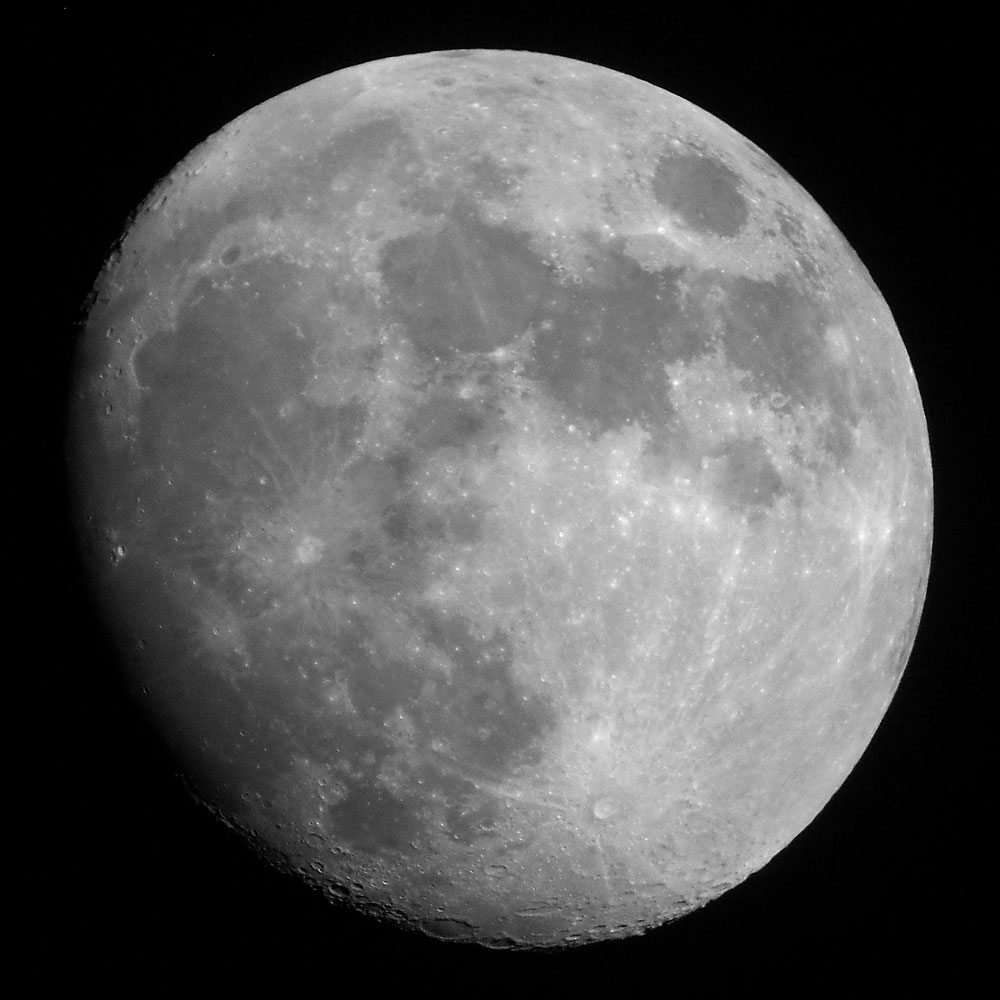 |
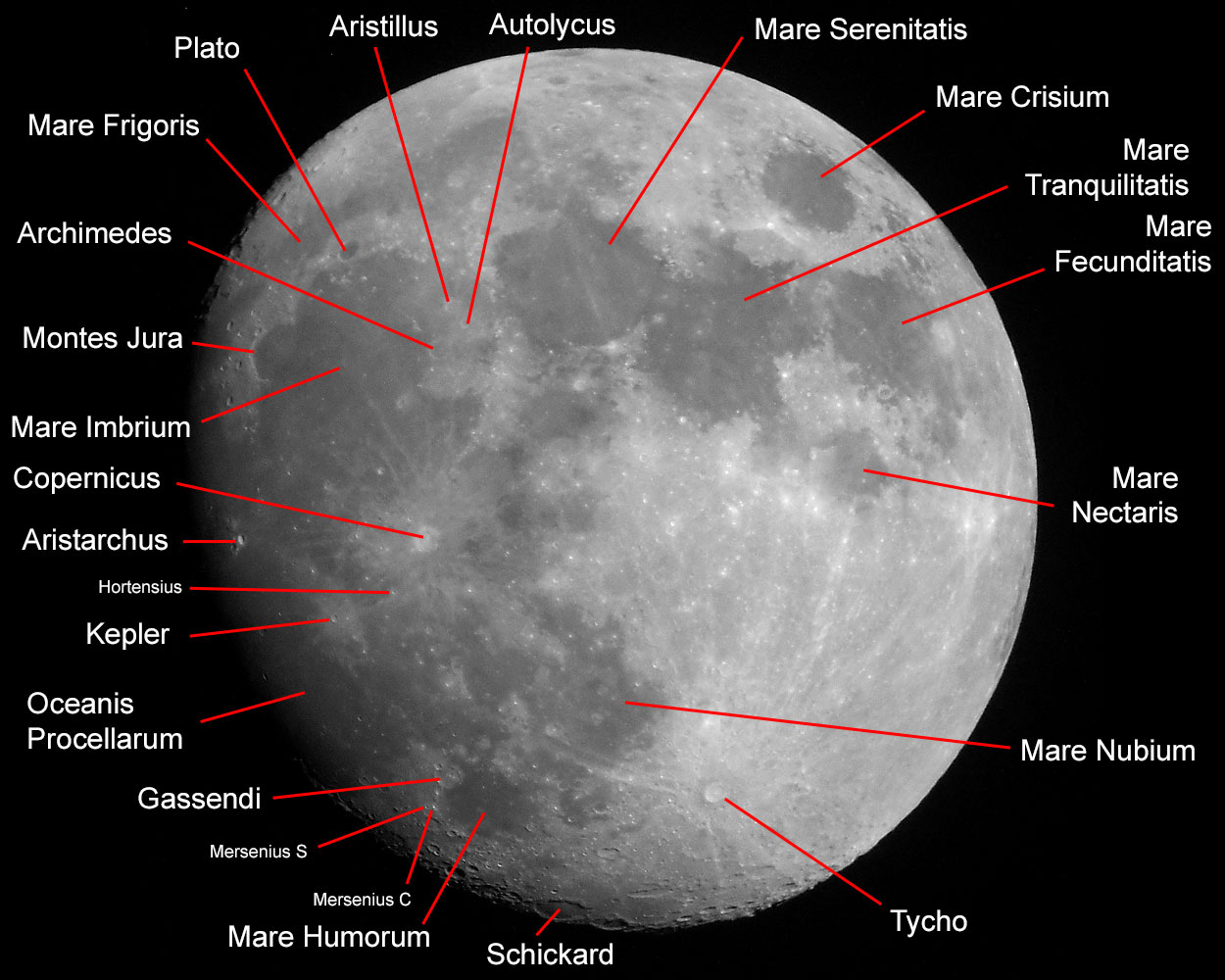 |
Photo data: February 27, 2018, Sky-Watcher Skymax-102 telescope, Ricoh GR held to the eyepiece
References
- Mond (Wikipedia): de.wikipedia.org/wiki/Mond
- Moon (Wikipedia): en.wikipedia.org/wiki/Moon
- Lambert Spix (2013, 3. Auflage). moonscout - Mondmeere, Krater und Gebirge einfach finden und beobachten. Oculum-Verlag. ISBN 978-3-938469-58-3
- Lambert Spix & Frank Gasparini (2011, 1. Auflage). Der Moonhopper. Oculum-Verlag. ISBN 978-3-938469-54-5
- Ronald Stoyan, Hans-Georg Purucker (2013, 1. Auflage). Reiseatlas Mond. Oculum-Verlag. ISBN 978-3-938469-64-4
- Virtual Moon Atlas: ap-i.net/avl/en/start
| 09.03.2019 |